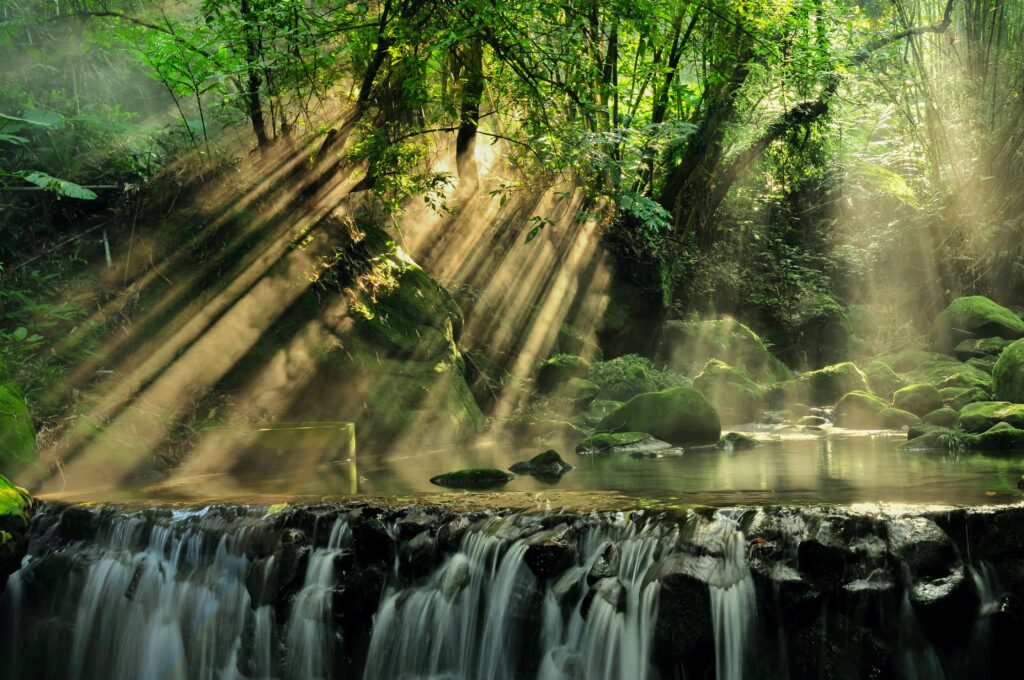The Amazon Rainforest, often referred to as the “Lungs of the Earth,” is a natural wonder of unparalleled significance. Covering a vast expanse of approximately 5.5 million square kilometers, it stretches across nine South American countries, including Brazil, Peru, Colombia, Venezuela, Ecuador, Bolivia, Guyana, Suriname, and French Guiana. This immense tropical rainforest is not only one of the most biodiverse places on the planet but also plays a crucial role in regulating the Earth’s climate. In this article, we will delve into the Amazon Rainforest, its unique features, importance, and the challenges it faces.
Geography and Biodiversity
The Amazon Rainforest is characterized by its lush, dense canopy of trees, towering over a rich understorey of diverse plant and animal species. It boasts an astounding array of biodiversity, harboring approximately 10% of all known species on Earth. This incredibly diverse ecosystem is home to jaguars, sloths, capybaras, poison dart frogs, and countless other species. The Amazon River, the world’s second-longest river, flows through this region, further enhancing its ecological significance.
Key Features
- Flora and Fauna Diversity: The Amazon Rainforest is teeming with life. It houses an estimated 390 billion individual trees, representing around 16,000 species. This immense vegetation contributes significantly to the planet’s oxygen production, earning its nickname as the “Lungs of the Earth.”
- Indigenous Communities: The Amazon is also home to numerous indigenous communities that have lived in harmony with the rainforest for centuries. These communities contribute to the rich cultural tapestry of the region and possess invaluable knowledge about sustainable living and medicinal plants.
- Climate Regulation: The Amazon Rainforest plays a pivotal role in maintaining global climate stability. Its trees absorb vast amounts of carbon dioxide, helping mitigate the effects of climate change. Additionally, the forest influences weather patterns, ensuring rainfall in many parts of South America.

Importance of the Amazon Rainforest
- Climate Stabilization: The Amazon Rainforest acts as a carbon sink, absorbing and storing vast quantities of carbon dioxide. This helps counteract the greenhouse effect, making it a crucial player in mitigating climate change.
- Biodiversity Hotspot: The Amazon’s rich biodiversity is essential for scientific research, as it provides insights into the evolution of species and potential sources of medicines. Many plants and animals in the region are still undiscovered or poorly understood.
- Economic Value: The Amazon Rainforest provides a plethora of resources, including timber, fruits, nuts, and medicinal plants, contributing to the livelihoods of millions of people in the region. It also supports industries like agriculture and ecotourism.
Challenges and Threats
Despite its vital importance, the Amazon Rainforest faces numerous threats, primarily driven by human activities:
- Deforestation: One of the most significant threats to the Amazon is deforestation. The clearing of land for agriculture, mining, and logging activities has led to the loss of vast tracts of forest. This not only disrupts the ecosystem but also releases stored carbon dioxide, exacerbating climate change.
- Illegal Activities: The Amazon Rainforest is a hotspot for illegal activities, including poaching, logging, and mining. These activities often go unchecked due to the remoteness of many areas, leading to further environmental degradation.
- Climate Change: Climate change is causing shifts in rainfall patterns and increasing the frequency and intensity of droughts in the Amazon, making the ecosystem more vulnerable to fire and degradation.
- Infrastructure Development: Road construction and infrastructure projects can fragment the forest, making it easier for illegal activities to take place and disrupting the movement of wildlife.
Conclusion
The Amazon Rainforest is a global treasure of unparalleled importance. Its unique biodiversity, role in climate regulation, and the cultural significance of the indigenous communities make it a critical part of our planet’s ecosystem. However, it is facing unprecedented challenges, primarily driven by human activities.
To protect the Amazon Rainforest, concerted international efforts are necessary. Initiatives to combat deforestation, support sustainable development, and empower local communities are crucial steps towards safeguarding this irreplaceable natural wonder. Only by recognizing the significance of the Amazon Rainforest and taking collective action can we ensure its preservation for generations to come.